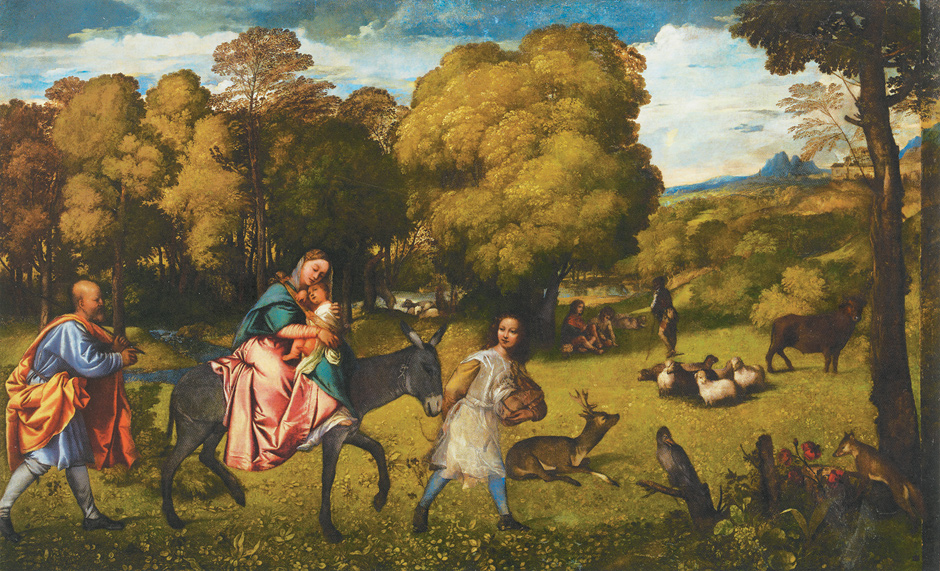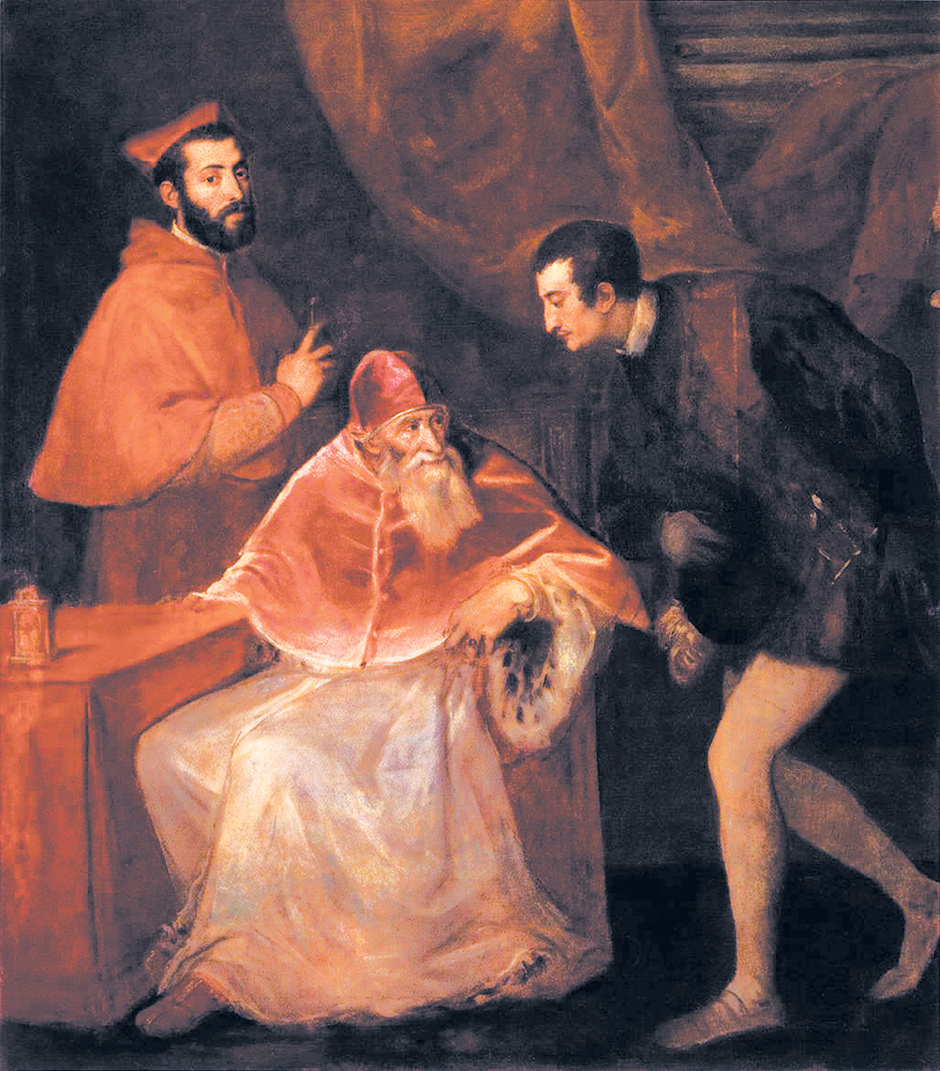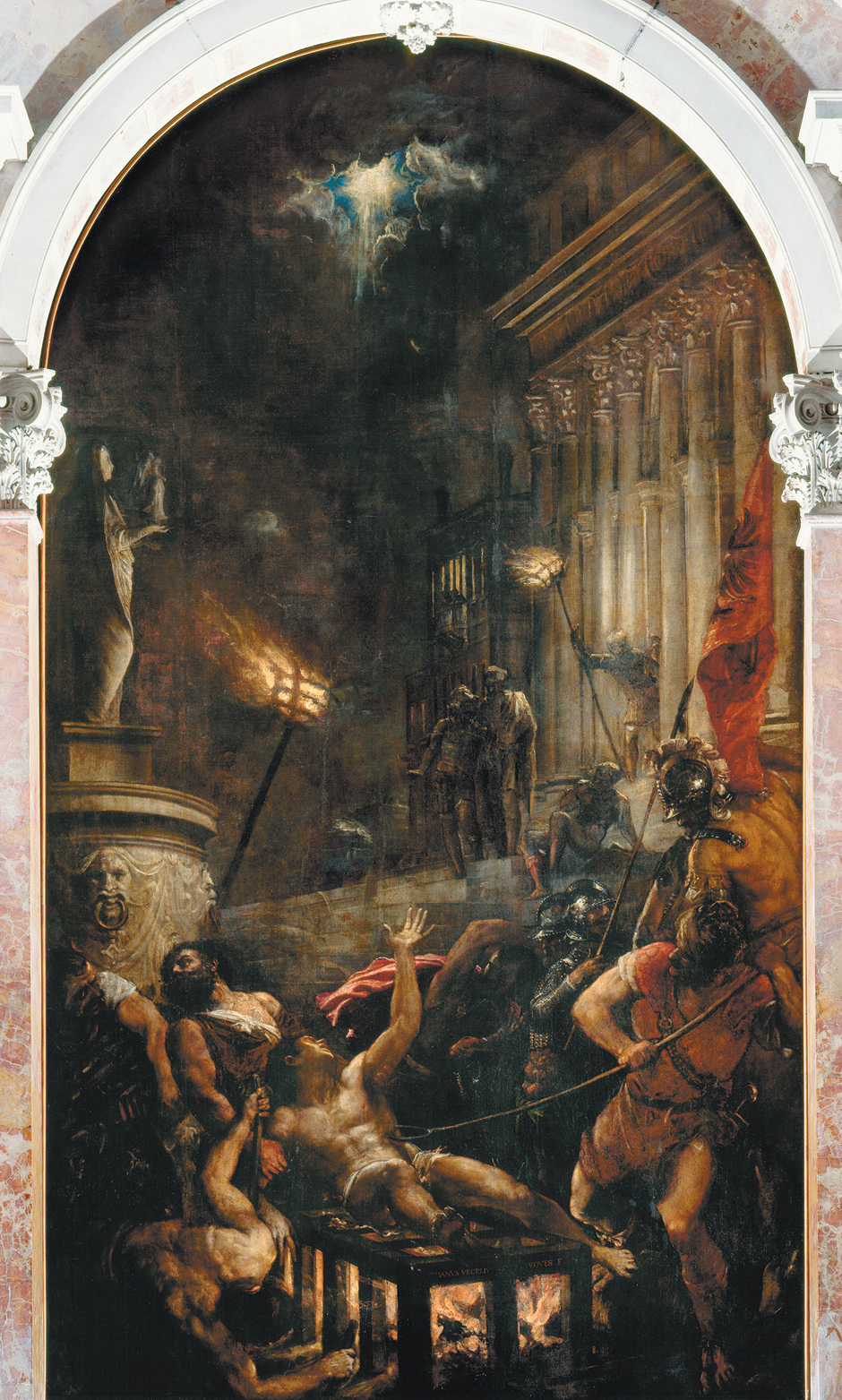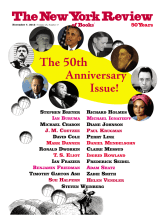Writing an artist’s biography has never been easy, for one of the most significant elements of any artistic life, the passage of an idea from eye to hand, is virtually indescribable. Furthermore, the pioneer of the form, the sixteenth-century Tuscan painter and architect Giorgio Vasari, struck such a brilliant balance between professional insight and juicy anecdote in his Lives of the Most Eminent Painters, Sculptors, and Architects (first published in 1550, revised and reissued in 1568) that writing an artistic biography after him can seem like trying to write epic after Homer. Vasari took egregious liberties with his Lives, offering up generous helpings of moral advice, tricks of the trade (normally “draw, draw, draw”), outpourings of Tuscan patriotism, and disarming hero-worship of Michelangelo. In good sixteenth-century style, Vasari also felt free to make up the occasional story when he needed one to drive home his moral point, and if need be, to fabricate the story of a nonexistent painter.
Modern biographers, on the other hand, are expected to stick to the facts. Aside from writing with gossipy verve, Vasari was a thoroughly respectable painter and a superb architect; he knew what he was talking about when he talked about art, and he expressed himself with firsthand expertise as well as pungent wit. Only Vasari, perhaps, could have acknowledged so openly that one of the most important things to happen in the life of the painter Tiziano Vecellio—Titian to his English-speaking admirers—was not so much an event as a long-drawn-out development, a change in the way the artist handled paint itself:
The truth is, that the way he worked in these later pictures is very different from the way he worked as a young man. The first paintings are executed with a certain fineness and incredible diligence, and are made to be seen both up close and from a distance, but these last are created out of brushstrokes laid down coarsely, and with spots of paint, in such a way that up close they cannot be seen at all and from a distance they appear to be perfect…and this way of working is judicious, beautiful, and stupendous, because it makes the paintings look alive and created with great artistry, disguising all the labor involved.
Without that change in Titian’s working method, without those abstract blobs that resolve themselves at a distance into images of startling precision, we would never have had Velázquez and Rubens, diplomats as well as painters.
Their diplomacy outlives them: at the same moment that Europe, the United States, and Russia have been rattling sabers over how to deal with the civil war in Syria, a peaceable exchange of Titian’s paintings has been taking place between Italy, Britain, and St. Petersburg, creating quiet but powerful links between people and nations, links built and maintained in order to cherish fragile objects of extraordinary beauty. Everywhere that Titian’s paintings travel, thousands of people flock to see them, and that same exchange of art and love of art has been taking place ever since the very young Titian descended from his rugged Alpine birthplace to study painting in Venice.
It is hard to think of a painter more rooted in his environment and yet more universal in his appeal. It was an appeal he worked tirelessly to refine, for Titian was a pioneer not only in the way he painted, but also in the way that he presented his talents to an international clientele. He was a formidable, pathbreaking businessman in a century, the sixteenth, when doing business first attained a truly global scope. And like so many successful businessmen, he was a fierce patriarch, close with his money and ruthless in the ambitions he harbored for himself and his children. Titian was renowned for his impeccable manners and charming character (and he served as an unofficial diplomat on occasion), but for all that exterior charm, he kept his real feelings and his private life strictly to himself. He knew his place in his hierarchical society, even when he was subtly changing the nature of what that place might be.
Titian’s afterlife is every bit as interesting as his life; his reputation, though consistently stellar, has not always been entirely wholesome. An inveterate experimentalist, he courted controversy virtually from the moment he began to assert his own artistic personality, and some of the subjects he painted have shocked later generations. In 1856, for example, the king of Naples, hoping to shore up his tottering throne, locked one of Titian’s paintings away in a “Pornographic Cabinet” together with a hoard of phallic wind chimes, explicit statues, and sexy frescoes from the royal excavations in Pompeii and Herculaneum.
The eroticism of that locked-away painting, Titian’s Danaë, is a good deal more discreet than that of those other frankly sexual objects: imprisoned in her chambers, she reclines on her bed as Jupiter appears to her in a shower of gold, pouring into her lap from heaven. To the Catholic king of Naples, as he faced attack by the rebel forces of Giuseppe Garibaldi, Danaë seemed to be enjoying her unusual experience a little too much; and the result of that golden rain was, of course, a baby: the future hero Perseus. And so Titian’s Danaë, the lascivious ancient artifacts, and three images of Venus, by Paolo Veronese, Annibale Carracci, and Michelangelo, were consigned to a narrow room carefully chosen for its darkness and dampness, behind a door with three separate locks, their keys distributed to three different offices, and then, for good measure, the whole entrance to the Pornographic Cabinet was bricked up.
Advertisement
Fortunately for Danaë, this pious move failed to sway the forces of history. On September 11, 1860, exactly four days after entering Naples as its new Dictator (with a capital “D”; that was his official title), Garibaldi ordered that the Pornographic Cabinet of the royal collection be opened to the public. With this symbolic attack on every kind of censorship, Garibaldi announced his intent “to save the works of art from inevitable ruin.” When a scramble to find the three keys to the cabinet failed, he ordered his men simply to break down the door, proclaiming, “Our revolution must be truly Italian, that is, worthy of the homeland of art and learning, and must embrace as one our glorious ancient and modern memories, fostering them all.”
Danaë may have languished under lock and key (just as the heroine herself did in the ancient myth), but the other Titians in Naples’s royal collection, a pair of portraits of Pope Paul III, retained their pride of place throughout the throes of national unification. An old pope in velvet robes evidently posed a less urgent challenge to public morals in the mid-nineteenth century than a languid young woman reclining nude on a bed. In the sixteenth century, however, when these portraits were fresh from Titian’s workshop, they had been sizzling properties in their own right. According to one story (not Vasari’s), Pope Paul disliked them, and it is easy to see why: Titian’s ruthless brush seems to have reached deep down into the pontiff’s soul, finding attitudes, fears, and sensations that Paul surely preferred to keep to himself. Danaë may be lolling on a bed as Jupiter rains down his favor, but because Titian shows her looking off into the distance rather than meeting our eye (or his), her thoughts remain her own.
Pope Paul, on the other hand, meets us swathed in ravishing velvet robes, but Titian has laid him bare, in a portrait of the old man hunched on his throne, and even more so in a triple portrait that shows him with his two appalling grandsons, Cardinal Alessandro and Duke Ottavio Farnese. As suave, smooth Cardinal Alessandro looks out to the viewer from behind the pope, Ottavio, clad in white tights, white lace, and satin, doubles over in an elaborate bow, the perfect image of an oily courtier. Their ancient grandfather, with his stooped spine and shrewd old eyes, recoils with a visible shudder, his iron will trapped in a failing body and his future wrapped up all too inevitably in this unctuous rogue. We can imagine why Ottavio’s bride, “Madama” Margaret of Austria, wore mourning dress on her wedding day.
Another young Farnese scion, Ranuccio, was just a boy when Titian painted him, with the special attention this artist always reserved for the very young. His images of two-year-old Clarissa Strozzi and twelve-year-old Ranuccio Farnese are as attentive to their individual personalities as his adult portraits, and Titian’s painting of the tiny Virgin Mary climbing the steps to the Temple of Jerusalem with fierce independence (Presentation of the Virgin, Galleria dell’Accademia, Venice) is a marvel of insight into the way children act (she may well have been modeled, body and stubborn soul, on his own daughter Lavinia).
Titian, as Vasari noted over and over again in his Life, was a painter of astonishing versatility, a master of landscape, of portraiture, of sacred painting, historical painting, mythology, a magician who could turn a dab of pigment into a flame, a pleat, a thunderbolt, a twinkle in the eye, a Cupid’s wing. One of his last two self-portraits (Madrid, Museo del Prado, 1562) focuses on only two elements, his right hand and his face, as if to say that the essence of this phenomenally successful man depended on the mysterious partnership of that hand, those eyes, and that brain. Titian’s eyes in this late portrait are like the old mirror in the poem by Cavafy “that had seen and seen”; they are clearly an old man’s eyes, faded, straining, fixed somewhere off in the distance, but they are also sharp as a drill under their beetling black brows. Tiziano Vecellio lived a long and largely fortunate life, but it was also a difficult life, and in this elegant, dignified picture he lets the pain of it show on his face, as clearly as he shows his own mastery of pain.
Advertisement
Sheila Hale’s new biography of Titian captures the same sense of the man as this portrait: his piercing insight, his dignity, and his inaccessible reserve. In many respects, despite the painter’s long, well-documented career, we know almost nothing about him, including such basic information as the number of his wives or the date of his birth. With remarkable success for so public a personage, Titian kept his domestic sphere strictly to himself. He lived in the part of Venice known as Cannaregio, near the docks and the Jewish Ghetto, in a house that he seems to have designed himself, ranged around a large garden. We can forget, in the face of all the state portraits, voluptuous goddesses, and history paintings he created over decades of activity, that Titian was also an unusually perceptive observer of nature, of trees and flowers and animals he painted from life. For a man of such enormous productivity, it is hard to imagine him simply sitting and thinking in his garden, but he clearly paid relentless attention to his surroundings, physical, spiritual, and social, and made sure that his own home provided a refuge from the metropolis in which he lived, and from his perpetually interesting times. He was a person sufficient in himself.
What Hale can show, and does with great powers of suggestion, is Titian’s world: its sights, sounds, colors, the web of family and friends, the troubled political realm in which he maneuvered so adroitly, and, in a series of color plates, the paintings that define his fifty-year career. At the center of this swirl of sense impressions, artworks, and political maneuvers, there is always the hermetically closed enigma of Titian himself, the man who saw so much, with such disconcerting clarity. Hale’s account of Titian’s life and times is long and detailed, evocatively written, an evident labor of love: for this talented, elusive man, for Venice, and above all for his glorious, ever-changing artistry. That artistry, thanks to his careful management, set him among popes, kings, cardinals, and emperors.
It was an unlikely destiny for a boy from an Alpine village, yet as Hale shows, Titian never broke his ties with Pieve di Cadore, the town where he was born around 1490. The distinctive peaks of the Cadore mountain range show up again and again in his paintings, providing a background to the most disparate events: the Holy Family’s flight to Egypt; a callow young lutenist’s private concert for Venus (he scarcely concentrates on his music); Jupiter’s abduction of Europa; Saint Jerome beating his chest with a rock in penitence; Venus blindfolding Cupid before he goes off to shoot arrows of longing into hopelessly mismatched hearts.
In Pieve di Cadore, the Vecellio family belonged to the upper ranks of a tough, hardworking mountain community: though not aristocrats, they were landowners both locally and in Venice who made a healthy income selling timber in the city and managing a series of sawmills. Hale suggests, plausibly, that Titian’s grandfather Conte commanded the large Vecellio clan with the forbidding authority that Titian himself would display with his own children; the painter’s father, Gregorio, stood out more for bravery and kindness than intelligence.
At the age of nine or ten, around 1500, Titian, gifted with his grandfather’s wit and ambition, came down from the mountains to study painting in Venice, lodging with an uncle until he was apprenticed (so Vasari reports) to the city’s most successful painter, Giovanni Bellini, whose style Vasari deplores as dry and repetitive. On the face of it, the criticism seems unfair. Bellini’s paintings are stunning, for the calm clarity of their composition and the brilliance of their color, sparkling, as only oil paint can sparkle, in the crisp, clean light that reflects back from the canals of Venice under a cloudless sky.
Bellini’s paintings, exquisite in every detail, seem to inhabit a world in which time has been suspended, for a moment or for eternity. Vasari, that child of the turbulent sixteenth century, greatly prefers Titian, whose painting evolved with astonishing unpredictability. When the Roman museum the Scuderie del Quirinale mounted a Bellini show in 2008, Vasari’s criticism finally made sense: one Bellini is a jewel, but a series of them do not quite make a diadem; they are too similar in their individual perfection. Like Pietro Perugino, the other late-fifteenth-century painter with a hyperactive workshop, Bellini produced dazzling paintings with dazzling consistency, whereas their pupils Raphael and Titian threw themselves into one risky, exciting experiment after another and left their teachers in the dust.
Bellini would have taught Titian how to grind color, and how to achieve the same piercing blues, gentle greens, and luminous whites, all of them on display in Titian’s earliest paintings. But then another painter arrived in Venice from the provinces: Giorgio da Castelfranco, known immediately as “Giorgione” (Big George), an artist who could match Bellini’s color in intensity, but substituted soft modeling for Bellini’s hard-edged precision, the indefinite outlines of a Venetian fog for the sharp detail of the city’s crisp, glittering sunlight. Titian was entranced.
That fresh enchantment shows in a very early painting, The Flight into Egypt, normally in the Hermitage in St. Petersburg, but displayed in Venice and London for a short period in the summer and fall of 2012 after its restoration was completed in 2011. Mary, carrying her infant son, rides through a luxuriant forest meadow on a donkey, an elderly Joseph keeping careful guard behind them on foot. A beautiful young man in a white tunic leads the animal by its bridle with his right hand, while in his left he carries the family’s gear in a little cloth-wrapped bundle, a wingless angel sent to watch over the refugees.
The meadow is a sea of wildflowers, and a virtual Noah’s Ark looks on as the Holy Family passes through their woodland: a fox, a deer, a cow, sheep, birds, all of them as serene as the mother and child, as if an angelic spell protected them all. In the distance, Titian has painted the distinctive mountains above Pieve di Cadore: the sugarloaf mountain called Croda Cuz, and the jagged ridge of Sassolungo di Cibiana behind it. It is hard to think of this tender, gorgeous idyll as a painting of refugees fleeing an atrocity, and even harder to imagine that the young Titian painted it shortly after this region of the Veneto had been turned into a war zone, with its full share of refugees, massacres, and devastation, but so it was in 1508, when the Holy Roman Emperor Maximilian I swooped down through the Cadore, burning, looting, murdering, raping, and incidentally destroying any record of Titian’s birth when his soldiers torched Pieve and its parish archives. By then, Titian, probably in his late teens, was hard at work in the relative safety of Venice, where the war created a surge of fugitives from the ravages of war, plague, and widespread poverty in the countryside.
Fifty years later, the painter of the sweet, verdant Flight into Egypt slashed out the harsh broad strokes of the Martyrdom of Saint Lawrence (Venice, Santa Maria Assunta dei Gesuiti, circa 1560;, a canvas that is all browns, yellows, reds, grays, whites, and blacks, an urban scene of shocking violence from a steep, hurtling perspective. Saint Lawrence was a deacon of the early Christian church in Rome who was tied to a grill over burning coals to force him to reject his faith. Instead, legend has it, he said, with consummate aplomb, “Turn me over, I think I’m done on this side.”
Titian’s Lawrence is not so cool; an agonized, outstretched arm shows that he suffers the tortures of Hell—did Titian see the terrible Rialto fire that swept Venice in 1514 or some other blaze? Yet the play of color around the saint, from the sparks of his fire to the torch that blazes high above his head, and the white-hot light that flashes down from Heaven to comfort him, springs off the surfaces of skin, stone, cloth, coal, and metal to weave a web of relationships that reinforce the story of heroic faith defying cruel decadence. This huge canvas stood at the entrance of the Titian show that opened last March in Rome’s Scuderie del Quirinale. In the cavernous hall of the former papal stable, it made a dramatic beginning to a marvelous exhibition; as the crowd of journalists surged into the space for the press preview, a gasp went up: “Mamma mia!”
Some of Titian’s earliest paintings already dealt with savage themes, like the episodes from the life of Saint Anthony he painted for the Scuola del Santo in Padua in 1511: a woman murdered by her husband, a man whose severed foot is miraculously reattached, and most dramatically a beautiful, plump young wife falsely accused of adultery by her husband until their baby, in the presence of Saint Anthony, speaks up to acknowledge his father’s paternity. Titian captures the tragedy of the scene unflinchingly, sounding the depth of the mother’s wounded pride as he dissects the suspicious father’s cringing pusillanimity.
By the end of his career, Hale notes, Titian was painting as much for foreign potentates as he was for Venetians, but she also shows how hard he struggled to secure the payments he was promised. The worst offender was King Philip II of Spain, who ordered an endless succession of paintings and paid for only a handful of them. Titian is often said to have reserved his best work for Philip, but works like The Martyrdom of Saint Lawrence suggest that he really did his best work for Venice, where he would always have to face it himself.
Titian’s late paintings confused Vasari as they confuse many modern viewers. Like Poussin and Renoir, he may have suffered from arthritis in his hands and problems with his eyesight. His brushwork grows consistently coarse, and his colors merge into a muddy brown that on close scrutiny is shot through with flashes of red and brilliant white; close up, these surfaces are as densely layered with color as a Jackson Pollock, and who is to say that they are not as carefully constructed as Pollock’s certainly were? And when that mud-brown is split by a bolt of electric yellow, as it is in the Pietà (now in the Galleria dell’Accademia in Venice), we can see how the sight of Titian’s late paintings must have electrified El Greco, who would have discerned the silvery tones glistening beneath the brownish surface, just as they do in Greek icons.
The subjects of these late works are almost unremittingly harsh, none more shockingly so than the Flaying of Marsyas that may have been Titian’s last painting, still underway when the plague carried him off in 1576. The furry satyr Marsyas had boasted that he was a better musician on his rustic panpipes than Apollo on his cithara, the carefully crafted, civilized version of the lyre (and the ancestor to guitars, zithers, violins, and all the other stringed instruments). Handsome, blond, eternally young Apollo won, of course, but the god was as mean and vindictive as he was beautiful; he condemned poor Marsyas to be flayed alive.
Titian shows the beginnings of the dreadful operation: Marsyas has been strung upside down from a truncated tree. Apollo leans in to slice into his victim’s chest while a minion works on a hairy thigh. In a macabre touch, a tiny dog laps up the rivulet of the satyr’s blood, just beginning to flow freely. The theme may well have been inspired in part by the 1571 flaying of the Venetian general Marcantonio Bragadin by the Turkish conqueror of Famagusta. At the same time, however, Apollo is also the universal symbol for art, so that in some terrifying sense, the handsome, pitiless god can be seen as representing Titian’s bounteous, pitiless talent. It is a somber coda to a career so steeped in beauty.
This Issue
November 7, 2013
Love in the Gardens
Gambling with Civilization
On Reading Proust






